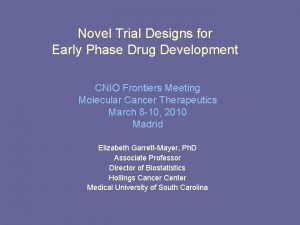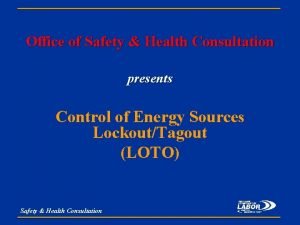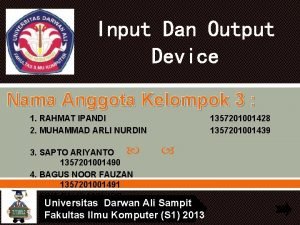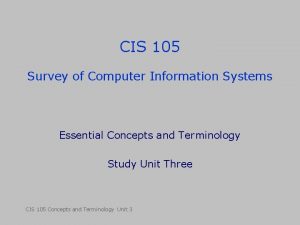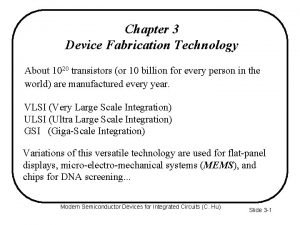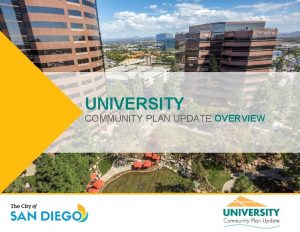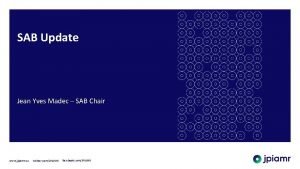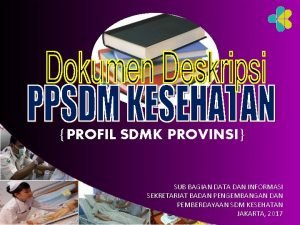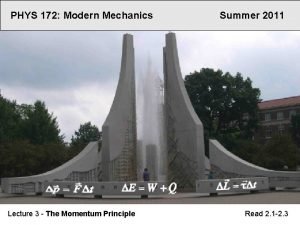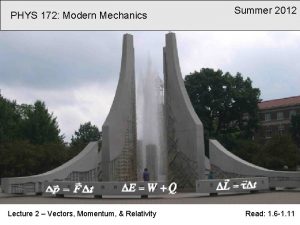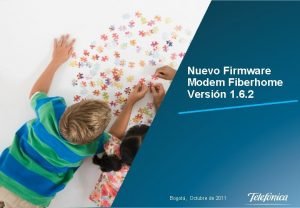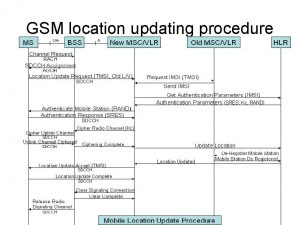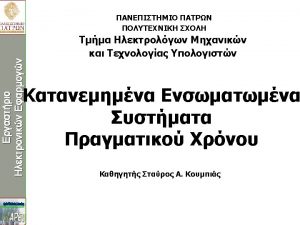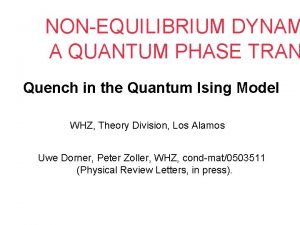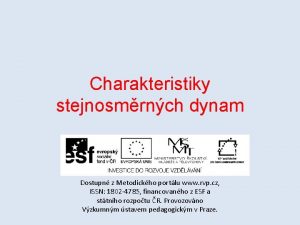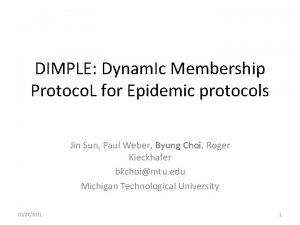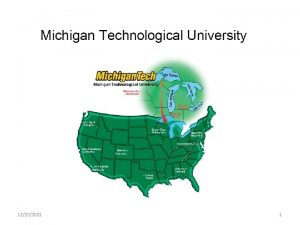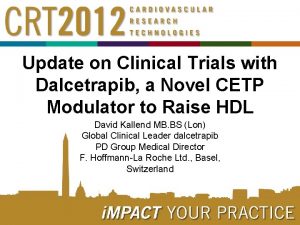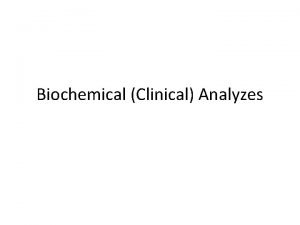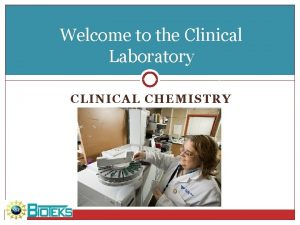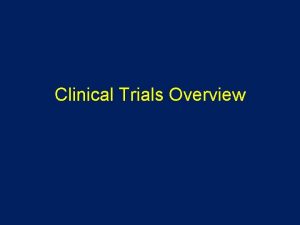Dynam X Technology Clinical Update A Novel Device

























- Slides: 25

Dynam. X Technology & Clinical Update A Novel Device Adapting to Patient Physiology Alex Abizaid, MD Ph. D*, Antonio Colombo, MD, Stefan Verheye, MD In. Cor, Sao Paulo, Brazil

Disclosure Statement of Financial Interest Affiliation/Financial Relationship Company Proctor for TAVR Boston Scientific, Edwards Research grants / Consulting Elixir, Meril Life Science

Stent-related events: pooled patient level analysis of 19 trials - 25, 032 pts BMS 1 st Gen DES 2 nd Gen DES Madhavan, M. V. et al. J Am Coll Cardiol. 2020; 75(6): 590 -604.

Long-term MACE rates remain high - ISAR TEST 4 MACE 10 Year Follow-up Cypher (55%) Mortality Cypher (37%) YUKON BP-SES XIENCE PP-EES (46%) YUKON BP-SES • No fundamental change in stent design over 30 years • MACE rates remain high regardless of polymer resorbability • Need for novel iteration to improve DES performance Kufner et al. ISAR-TEST 4 Trial. Circulation, 2019. XIENCE PP-EES (30%)

Dynam. X Bioadaptor First fundamental innovation in implant design intended to meet and exceed 2 nd Gen DES performance • Meets acute performance of DES • Exceeds DES performance with unique uncaging of the vessel • Positive adaptive vessel remodeling • Restoration of pulsatility and physiologic cyclic strain • Restoration of vessel angulation

Dynam. X Bioadaptor is the First Fundamental Innovation in Metallic Implant Design Proven Cobalt Chromium Alloy Dynam. X Bioadaptor Proven Conformal (3µm) PLGA Bioresorbable Polymer Top coat DESyne BD/DESolve DESyne/DESyne BD Strut Thickness 71µm Proven Drug and Dose Novolimus, 5µg/mm DESyne/ DESyne BD/DESolve Drug elutes in 3 M; Polymer degrades in 6 M Proven Conformal (6µm) PLLAbased Bioresorbable Polymer Base coat DESolve

Dynam. X Bioadaptor Unique Design Features Engineered to Adapt to Physiology • Uncaging elements at low-stress regions of each sinusoidal ring in a helical pattern while maintaining longitudinal continuity of the bioadaptor Data on file at Elixir Medical

Profile Radial Strength Data on file at Elixir Medical Better Flexibility Dynam. X Bioadaptor Acute Performance Matches latest Gen DES Flexibility Deliverability

Dynam. X Bioadaptor Restores Physiologic Cyclic Strain & Pulsatility IVUS imaging of porcine coronary artery during systole and diastole Dynam. X Uncaged Data on file at Elixir Medical Unstented artery DES Caged

Dynam. X Bioadaptor Restores Compliance Stenting reduces compliance • • More green = greater compliance Dynam. X uncaged has 10 X the compliance of a caged DES FEA analysis of stented coronary Data on file at Elixir Medical

Dynam. X Bioadaptor Reduces Geometric Distortion Vessel Angulation associated with MACE Dynam. X Uncaged provides a 60% increase in conformability 60% improved conformability FEA Model Bench testing and FEA model Data on File at Elixir Medical Gyongyosi et al, JACC 2000; 35: 1580 -9

Dynam. X Bioadaptor Improves Fracture Resistance* Dynam. X uncaged: 90% reduction in maximum tensile stress in flexion* 70% reduction tensile stress in torsional rotation * Ormiston stent flexion model Ormiston et al. Circ Cardiovasc Interv 2014; 7: Dec 24 13 [E-pub]

Dynam. X Bioadaptor Preserves Positive Adaptive Remodeling Serial In-vivo OCT evaluation in adult porcine coronary model Increase in mean device and lumen OCT based measurements area § No early or chronic recoil prior to uncaging § Maintains uniform, thin NIH § Uncaging results in increased Mean Device and Lumen Area Preclinical Studies conducted at Accel. LAB, Montreal, Canada Dynam. X Bioadaptor allows the vessel to accommodate NIH and restores Lumen Area Data on file at Elixir Medical

Dynam. X Mechanistic Clinical Trial Single de novo Coronary Artery Lesions Reference vessel diameter: 2. 5 -3. 5 mm Lesion length: ≤ 24 mm, DAPT 12 months 2. 5, 3. 0, 3. 5 mm diameters; 14, 18, 28 mm lengths Seven International Sites PI’s: Dr. Verheye ( Belgium) & Dr. Colombo ( Italy) 50 patients Study Purpose: Evaluate the safety and performance of the Dynam. X in de novo native coronary arteries Study Design: Non-randomized, consecutive enrolment : 9 & 12 month imaging follow-up cohorts Principal Endpoints: Clinical: Target Lesion Failure (cardiac death, target vessel MI, and clinically-indicated TLR); bioadaptor thrombosis at 9/12 months (additional follow-up at 30 days, and 1– 3 yrs QCA: Late lumen loss, MLD, % DS at baseline and follow-up IVUS: Change in mean and minimum lumen, bioadaptor and vessel areas from post-procedure to 9/12 month followup; pulsatility/vasomotion assessment at 9/12 month follow-up; malapposition at baseline and follow-up OCT: NIH Volume, Bioadaptor Strut apposition and coverage

Dynam. X Mechanistic Study Patient (Clinical) Followup 30 Day (n = 50) 6 Months (n = 49) 3 9 Months (n = 49) 12 Months (n = 48) 4 TLF 0 0 2 2 All Death 0 0 2 2 Cardiac Death 1, 2 0 0 2 2 Non-Cardiac Death 0 0 Target Vessel MI 0 0 Clinically Indicated-TLR 0 0 Non-Clinically Indicated TLR 0 0 Definite/Probable Thrombosis 0 0 1 – Unwitnessed death (Day 255), Hx of Korsakoff’s Syndrome, No autopsy performed; Adjudicated per ARC-2 as Cardiac Death due to unwitnessed death. 2 – Multi-organ failure following Heart Failure Hospitalization (Day 267); Adjudicated per ARC-2 as Cardiac Death due to Heart Failure hospitalization. 3 - LTFU after 81 Days 4 - LTFU after 304 Days

Dynam. X Mechanistic Imaging Follow-up Final Sample Size QCA 45 (90%) IVUS 38 (76%) OCT 28 (56%) QCA: completed in 45/50 patients § 2 lost to follow-up § 2 patient death § 1 patient received TAVR; angio f/u not done IVUS: completed in 38/45 § 7 catheter mismatch (cath HZ different pre and post) OCT : completed in 28/32 possible subjects (2 participating centers) § 1 DICOM only data § 1 stationary files only § 2 core Lab unable to open or read file

QCA at Post-Procedure, 9 and 12 Month Follow-up Variable 9 + 12 Month Follow-up (n=45) Post-Procedure 9 + 12 Month Follow-up In-Segment RVD Interp (mm) 2. 93 ± 0. 38 2. 90 ± 0. 36 MLD (mm) 2. 56 ± 0. 31 2. 45 ± 0. 34 %DS 12. 14 ± 8. 7 15. 0 ± 10. 1 Acute gain (mm) 1. 44 ± 0. 36 -- Balloon-Artery Ratio 1. 14 ± 0. 09 -- -- 0. 11 ± 0. 14 Late Lumen Loss (mm) In-Bioadaptor RVD Interp (mm) 2. 95 ± 0. 36 2. 92 ± 0. 36 MLD (mm) 2. 74 ± 0. 30 2. 64 ± 0. 36 %DS 6. 69 ± 6. 8 9. 3 ± 10. 2 1. 62 ± 0. 34 -- -- 0. 11 ± 0. 17 0. 03 (0. 01, 0. 17) Acute gain (mm) (Mean ± SD) Late Lumen Loss (mm) (Median , IQR) --

OCT analysis: Maintains Thin Uniform NIH Post. Uncaging OCT at 9 M Follow up: Thin and Uniform NIH Coverage and Uncaging Device Timepoint Mean NIH Thickness (µm) Dynam. X 9 and 12 M 139 ± 43 Xience 13 M 142 ± 113 Resolute 13 M 116 ± 99 Xience 9 M 124 ± 42 Resolute 9 M 139 ± 58 Mi. Stent 8 M 132 ± 53 Dynam. X Bioadaptor – NIH Thickness Consistent with 3 rd Gen DES Platforms Reference Resolute All Comers: Gutierrez-Chico et al EHJ, 2011; 32: 2454 COVER-OCT Trial - Kim et al. Am Heart J 2012; 163: 601 DESSOLVE-1 Trial - Attizzani et al. Am J Cardiol 2013; 112: 1557

Pulsatility Analysis : Stationary OCT Acquisition in subset Systole Lumen area: 4. 96 mm 2 Bioadaptor area: 6. 05 mm 2 Diastole Change in Lumen Area, (n=6) mm 2 - stationary OCT recording - Lumen area: 5. 65 mm 2 Bioadaptor area: 6. 59 mm 2 95% predictive interval relative to the mean: 11% dia time Patient: 28 -520 -9 M OCT corelab analysis showed a 11% change in lumen area during a cardiac cycle: systole vs diastole in co-registered images

Restoration of Vessel Angulation Vessel Straightening is a Predictor of MACE Dynam. X Bioadaptor Reduces Geometric Distortion* Case Example - Angulation Assessment Pre-Bioadaptor Post-Bioadaptor 9 -Month Followup • 6 patients were assessed for a greater than 10 degree change in angulation post implant * Abnormal CFV, shear stress (MACE, restenosis) Patient: 28 -501 3. 5 x 18 mm Dynam. X Bioadaptor • Analysis of angulation changes shows a consistent return towards baseline angulation 20

Dynam. X Bioadaptor Preserves Positive Adaptive (Glagov) Vessel Remodeling Area 2 nd Gen DES Dynam. X Bioadaptor Device 140µm Vessel No Change Lumen Reduced Device Increased Vessel Increased Lumen Maintained Dynam. X Bioadaptor uncaged allows vessel to accommodate NIH/disease progression and to maintain flow lumen area

Dynam. X Bioadaptor Accommodates NIH/Disease Progression to Maintain Lumen Area: Paired IVUS Analysis 9 + 12 Months IVUS Parameter (n=38) Post-Procedure 9 + 12 Month Follow -up Change from Post. Procedure (p<0. 05 = significant) Mean Vessel Area (mm 2) 14. 10 ± 2. 99 14. 54 ± 3. 12 3% 0. 0170 Mean Bioadaptor Area (mm 2) 7. 39 ± 1. 20 7. 74 ± 1. 46 5% 0. 0005 Mean Lumen Area (mm 2) 7. 39 ± 1. 20 7. 35 ± 1. 31 0% 0. 5940 14. 10 14. 54 7. 39 7. 74 7. 39 p= 7. 35

Dynam. X Bioadaptor Conclusions • Dynam. X Bioadaptor performs similar to 2 nd gen DES - implantation technique, deliverability, conformability and radial strength while the vessel heals • Innovative uncaging of Dynam. X Bioadaptor restores pulsatility of the vessel and allows the vessel to return towards baseline angulation. • Dynam. X Bioadaptor effectively uncages the vessel to preserve positive adapative remodeling and maintain the vessel lumen - demonstrated by IVUS data and the low QCA LLL at 9/12 months • Dynam. X Bioadaptor demonstrated excellent safety over 9 and 12 month follow-up

Dynam. X Bioadaptor Trial Randomized (2: 1), Single-Blind, Multi-Center Clinical Trial Principal Investigator: Dr. Shigeru Saito CEC: CERC Single/Multiple De Novo Native Coronary Artery Lesions Vessel Diameters: 2. 5 - 3. 5 mm; Stent Diameters: 2. 5 - 3. 5 mm Lesion Length: ≤ 24 mm (Single Stent), ≥ 24 mm Stent Lengths: 14, 18 and 28 mm Total enrollment: 474 to have 429 evaluable patients QCA / IVUS subset: 60 patients PK sub-study: 8 Subjects Number of Sites: 40 in Japan, Brazil, Europe and NZ Minimum of 12 months DAPT with Aspirin indefinitely Dynam. X - Co. Cr + Biodegradable Polymer + Sirolimus @ 7µg per mm Stent Length Dynam. X n=286 (evaluable) Clinical Follow-Up 30 d 6 mo 12 mo Angio/IVUS Imaging Follow-Up (sub-set) Primary Endpoint : Target Lesion Failure (TLF) at 12 months (non-inferiority) Imaging Endpoints: Late lumen loss at 12 months by QCA Change in mean lumen area from baseline to 12 months follow-up assessed by IVUS Clinical Endpoints: Acute Success including Device and Procedure Success Clinically-indicated Target Lesion, Target Vessel Revascularization, Target Vessel Failure and non-Target Vessel Revascularization (CI-TLR, CI-TVR; CI-TVF; NTVR) at 1, 6 and 12 months and annually to 5 years Additional Device Thrombosis at 1, 6 and 12 months and annually to 5 years Imaging Endpoints: Acute, persistent and late acquired malapposition Lumen, vessel and device areas, volumes, diameters at baseline and 12 mo % neointimal volume at 12 mo 2 yr 3 yr 4 yr 5 yr Resolute Onyx n=143 (evaluable)

Vessel Responds to Physicological Stimuli Dynam. X Bioadaptor Showed a Substantial Increase in Mean Lumen Area Post-Nitro compared to Pre-Nitro. Represents ~ 30% increase in flow. Case Example Pre-Nitro Post-Nitro Diameter (mm) Min 25 Area (mm 2) Pre -Nitro Post-Nitro Pre-Nitro Post-Nitro 2. 17 2. 36 3. 71 4. 37 Max 2. 88 3. 15 6. 51 7. 77 Mean 2. 53 ± 0. 18 2. 72 ± 0. 21 5. 06 ± 0. 71 5. 86 ± 0. 90 Patient # 28 -514 3. 5 x 18 mm Dynam. X Bioadaptor
 Shadow paging recovery technique
Shadow paging recovery technique Input device output device storage device
Input device output device storage device Novel clinical drug trial design
Novel clinical drug trial design A tagout device is preferable to using a lockout device.
A tagout device is preferable to using a lockout device. Kelompok output
Kelompok output A named collection of data on a storage medium
A named collection of data on a storage medium Kcs device agreement
Kcs device agreement Diffusion process in ic fabrication
Diffusion process in ic fabrication Zechariah
Zechariah Zechariah stevenson update
Zechariah stevenson update University community plan update
University community plan update Temporary update problem in dbms
Temporary update problem in dbms Sab update.com 2021
Sab update.com 2021 Lnes
Lnes Dokumen deskripsi sdmk
Dokumen deskripsi sdmk Teacher prd examples
Teacher prd examples Position update formula
Position update formula Position update formula
Position update formula Fiberhome hg6245d firmware download
Fiberhome hg6245d firmware download Move update compliance
Move update compliance Mdh situation update
Mdh situation update Iqcs help desk
Iqcs help desk Cucm mixed mode with tokenless ctl
Cucm mixed mode with tokenless ctl 811 ticket number
811 ticket number Location update procedure
Location update procedure Chrome update
Chrome update


